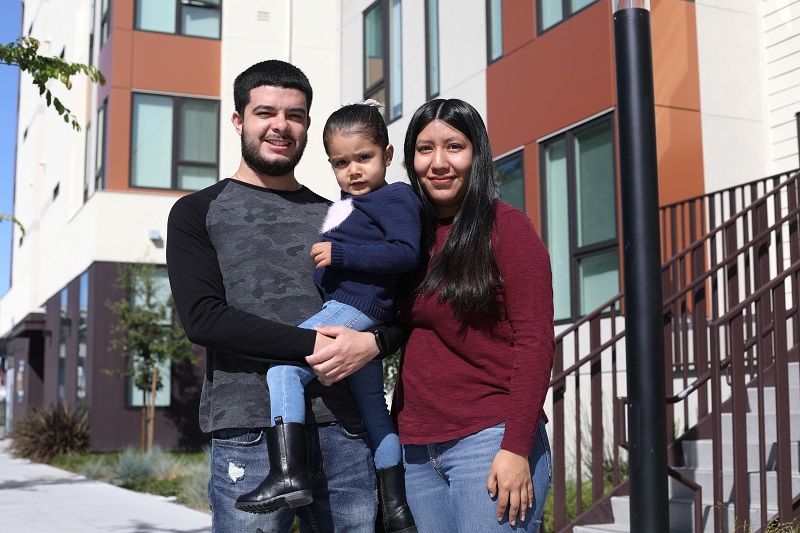BART releases Sustainability Report showing strides toward environmental goals
BART’s annual Sustainability Report is out, and it’s chock-full of interesting news about strides BART is making to address climate change, environmental justice and the housing crisis.
BART is more than just trains and tracks. The District, now operating in five Bay Area counties, includes real estate assets that can be used to catalyze transit-oriented development and build liveable communities.
The Coliseum Connections project is a shining example. This residential project has exceptional access to public transportation and is a true mixed-income property, with half its 110 apartment units designated as moderate-income rentals and half set aside as affordable housing for those making 50%-60% of the median income for Oakland.

The Barragan family photographed outside their home at Coliseum Connections / Photo by Maria J. Avila
Also, consider that BART is one of Northern California’s largest consumers of electricity. We have a responsibility to lead the way in green energy and conservation, and we do so in ways both large and small.
On a large scale, our Wholesale Electricity Policy has pushed BART to shift energy sourcing away from unspecified power sources and toward zero- and low-carbon sources, which has significantly reduced BART’s greenhouse gas emissions.
On a smaller scale, LED lighting upgrades throughout stations and parking areas are conserving energy. And perhaps most noticeably, more of our new Fleet of the Future rail cars, which are designed to be at least 7% more efficient than legacy cars, are being steadily added to service.
Other case studies in the report touch on: earthquake safety; public-private partnership with Workday; decommissioning our legacy train cars; low-impact development; rain
gardens to capture, detain, and treat storm water runoff; preparing for potential flood impacts from climate change; sale of green bonds; the Carpool-to-BART parking program; and MacArthur Plaza’s improvements and new bike station.
Looking ahead, it’s likely that the challenging targets we’ve set for our metrics will be difficult to achieve in our new pandemic reality, but our commitment to making positive changes for our world is unwavering.
Download the report and learn more about BART’s Sustainability Program by visiting the sustainability section.